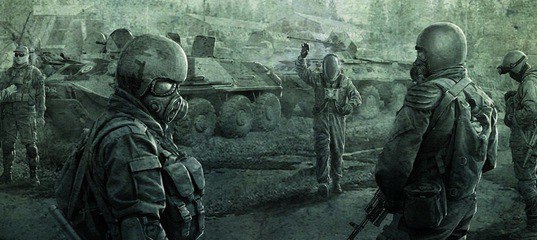ChangeLog 05.19: - Pressing P will toggle phasing trough objects and walls - Left shit and left control raises and lowers the main camera. WIP durability in place, but turned off for debugging. ChangeLog 05.20: - Customers dirty the floor where they walk - 1,2,3,4 buttons change player state - Q,E buttons are context buttons. CHANGELOG 3/17/2018. 3/17/2018 Comments. Surveys The Survey option has now been added. Games should be added at a faster pace now.
- Changelog 3 17/2018clout Gamestop
- Changelog 3 17/2018clout Games Free
- Changelog 3 17/2018clout Games Download
Don’t let your friends dump git logs into changelogs.
Version 1.0.0What is a changelog?
A changelog is a file which contains a curated, chronologically ordered list of notable changes for each version of a project.
Why keep a changelog?
To make it easier for users and contributors to see precisely what notable changes have been made between each release (or version) of the project.
Who needs a changelog?
People do. Whether consumers or developers, the end users of software are human beings who care about what's in the software. When the software changes, people want to know why and how.
How do I make a good changelog?
Guiding Principles
- Changelogs are for humans, not machines.
- There should be an entry for every single version.
- The same types of changes should be grouped.
- Versions and sections should be linkable.
- The latest version comes first.
- The release date of each version is displayed.
- Mention whether you follow Semantic Versioning.
Types of changes
Addedfor new features.Changedfor changes in existing functionality.Deprecatedfor soon-to-be removed features.Removedfor now removed features.Fixedfor any bug fixes.Securityin case of vulnerabilities.
How can I reduce the effort required to maintain a changelog?
Keep an Unreleased section at the top to track upcoming changes.
This serves two purposes:
- People can see what changes they might expect in upcoming releases
- At release time, you can move the
Unreleasedsection changes into a new release version section.

Can changelogs be bad?
Yes. Here are a few ways they can be less than useful.
Commit log diffs
Using commit log diffs as changelogs is a bad idea: they're full of noise. Things like merge commits, commits with obscure titles, documentation changes, etc.
The purpose of a commit is to document a step in the evolution of the source code. Some projects clean up commits, some don't.
The purpose of a changelog entry is to document the noteworthy difference, often across multiple commits, to communicate them clearly to end users.
Ignoring Deprecations
When people upgrade from one version to another, it should be painfully clear when something will break. It should be possible to upgrade to a version that lists deprecations, remove what's deprecated, then upgrade to the version where the deprecations become removals.
If you do nothing else, list deprecations, removals, and any breaking changes in your changelog.
Confusing Dates
Regional date formats vary throughout the world and it's often difficult to find a human-friendly date format that feels intuitive to everyone. The advantage of dates formatted like 2017-07-17 is that they follow the order of largest to smallest units: year, month, and day. This format also doesn't overlap in ambiguous ways with other date formats, unlike some regional formats that switch the position of month and day numbers. These reasons, and the fact this date format is an ISO standard, are why it is the recommended date format for changelog entries.

Frequently Asked Questions
Is there a standard changelog format?
Not really. There's the GNU changelog style guide, or the two-paragraph-long GNU NEWS file 'guideline'. Both are inadequate or insufficient.
This project aims to be a better changelog convention. It comes from observing good practices in the open source community and gathering them.
Healthy criticism, discussion and suggestions for improvements are welcome.
What should the changelog file be named?
Call it CHANGELOG.md. Some projects use HISTORY, NEWS or RELEASES.
While it's easy to think that the name of your changelog file doesn't matter that much, why make it harder for your end users to consistently find notable changes?
What about GitHub Releases?
It's a great initiative. Releases can be used to turn simple git tags (for example a tag named v1.0.0) into rich release notes by manually adding release notes or it can pull annotated git tag messages and turn them into notes.
GitHub Releases create a non-portable changelog that can only be displayed to users within the context of GitHub. It's possible to make them look very much like the Keep a Changelog format, but it tends to be a bit more involved.
The current version of GitHub releases is also arguably not very discoverable by end-users, unlike the typical uppercase files (README, CONTRIBUTING, etc.). Another minor issue is that the interface doesn't currently offer links to commit logs between each release.
Can changelogs be automatically parsed?
It’s difficult, because people follow wildly different formats and file names.
Vandamme is a Ruby gem created by the Gemnasium team and which parses many (but not all) open source project changelogs.
What about yanked releases?

Yanked releases are versions that had to be pulled because of a serious bug or security issue. Often these versions don't even appear in change logs. They should. This is how you should display them:
## 0.0.5 - 2014-12-13 [YANKED]
Changelog 3 17/2018clout Gamestop
The [YANKED] tag is loud for a reason. It's important for people to notice it. Since it's surrounded by brackets it's also easier to parse programmatically.
Should you ever rewrite a changelog?
Sure. There are always good reasons to improve a changelog. I regularly open pull requests to add missing releases to open source projects with unmaintained changelogs.

It's also possible you may discover that you forgot to address a breaking change in the notes for a version. It's obviously important for you to update your changelog in this case.
How can I contribute?
This document is not the truth; it’s my carefully considered opinion, along with information and examples I gathered.
This is because I want our community to reach a consensus. I believe the discussion is as important as the end result.
So please pitch in.
Conversations
I went on The Changelog podcast to talk about why maintainers and contributors should care about changelogs, and also about the motivations behind this project.
I’ve been hard at work to bring The True Slime King closer to full release. The last 4 updates have continued to breathe life into The True Slime King. Let’s take a deeper look at what progress is being made on the game.
Changelog 3 17/2018clout Games Free
Update v1.3.1 brought more Halloween themed objects, as showcased in this level:
[embedded content]

I’m really happy with how the bats turned out, and I think they really help add to the atmosphere of any of the Halloween-themed levels.
Changelog 3 17/2018clout Games Download
Update v1.3.2 was focused on bug fixes and performance updates, but it did come with some new goo animation to the menu system to make it feel just a bit more alive.
The menu system was feeling a bit dull now that all of the other systems in the game have been spiffed up so much, so I thought it was time to bring a bit of life to the menu system by adding a goo drip animation.
Update v1.3.3 brought some massive improvements to the Level Editor (namely the brand new undo/redo system).
All of the Story Mode levels in The True Slime King are made using the same in-game level editor that can be used by anyone to create levels and share them on the in-game online level exchange. I’m super happy that the level editor is getting more and more polished since it’s such a heavily used tool (for me and for the community).
Update v1.3.4 brought several improvements to various Graphics in the Story Mode. Below you can see a few videos
Here are some videos of a few of the graphics improvements in this update:
[embedded content]
[embedded content]
[embedded content]
I had a lot of fun playing with the graphics and figure out how to improve them. This is also the first time I’ve recorded my pixel art session and shared it. I had a lot of fun with that as well and plan to continue sharing as much of the Slime King development process as possible.
For the full details of all these updates, you can further check them out here: